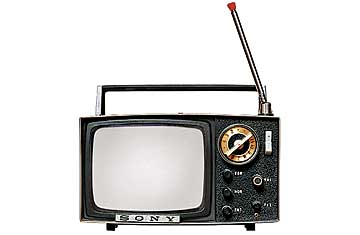
In 1960, 87% of U.S. households had a TV.
The panic was palpable as the June 12 switch to digital television loomed. With the nation's over-the-air analog stations about to go offline, 3 million Americans were reportedly unprepared. Fast action was necessary, said President Obama, so that no one missed news or emergency information. Fear of going tubeless would have been hard to imagine in the 19th century, when inventors first dreamed up devices to let people "see by electricity." Some thought the idea foolhardy. An 1881 article in Nature speculated that transmitting images over distance was possible — but questioned whether the idea warranted "further expense and trouble."
That skepticism seemed fair based on early attempts. In 1884, a German inventor created crude moving images by filtering light through a spinning disk punched with holes. In the early 1920s, engineers in the U.S. and U.K. sent still pictures and moving silhouettes using radio waves. In 1928, General Electric broadcast the first TV drama: a modified small spinning disk and bright lamp produced off-center, blurry pictures of cigarette-toting actors gallivanting around what was supposed to be Europe (but was actually Schenectady, N.Y.). It was one of the best offerings at the time. Other must-see TV included such scintillating subjects as smoke rising from a chimney.
Steadily, however, the picture quality improved — and the audience grew. Regular nationwide television broadcasts began in 1939. From 1945 to '48, sales of television sets increased 500%. The first widespread broadcast in color went out in 1954, and today there are televisions in some 110 million U.S. households. Revenues from TV broadcasting, cable, advertising and TV-set sales totaled nearly $182 billion in 2006. Talk about worth the trouble.
